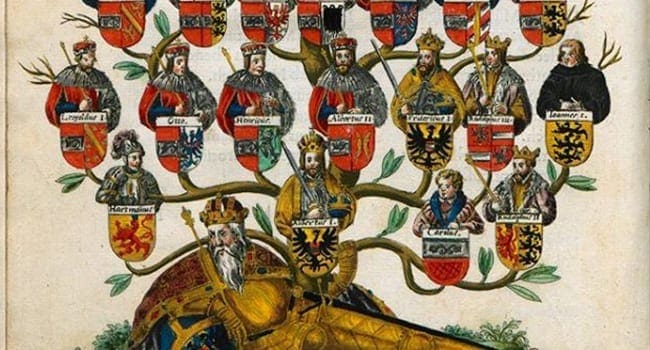 Thanks to a voluble professor of European history at University College Dublin, the Habsburgs first piqued my curiosity in the early 1960s. Then the interest lay dormant until a chance 2011 visit to the imperial crypt in Vienna’s Capuchin monastery.
Thanks to a voluble professor of European history at University College Dublin, the Habsburgs first piqued my curiosity in the early 1960s. Then the interest lay dormant until a chance 2011 visit to the imperial crypt in Vienna’s Capuchin monastery.
In operation since 1632, the crypt contains the tombs of more than 140 Habsburg royalty. If you’re ever in central Vienna with an hour to kill, it’s an absorbing experience.
History buffs seeking the whole story can look forward to the impending North American publication of Martyn Rady’s The Habsburgs: To Rule the World. Rady is a specialist in Central European history and this’ll be a fuller exposition than his 2017 The Habsburg Empire: A Very Short Introduction.
Meanwhile, let’s take a quick look at some Habsburg highlights.
Who were they and why were they important?
The Habsburg beginnings can be traced to northern Switzerland in the 11th century, marked by the founding of a Benedictine abbey and the building of what became known as the Castle of the Hawk. By the 13th century, they were ensconced in Austria. And while that became the core home base, their power and influence ranged further.
At various points, the dynasty ruled much of Central Europe, Belgium, the Netherlands, Germany, Spain and Portugal, plus bits of Italy, Poland and other assorted spots.
For a period, there were two family branches, one centered in Austria and the other in Spain. Through the latter, Habsburg power extended to the Americas.
How did the Habsburgs get to be so powerful?
Ambitious families had two routes to power – war and marriage. The Habsburgs pursued both and were especially adept at marrying.
As a strategy, it wasn’t without risk. To quote Rady, it “might easily have come unstuck, with the consequence that the possessions of the Habsburgs passed to others.”
However, it worked just fine. A combination of wiliness and fecundity delivered over half of Europe.
The Habsburgs also had an affinity for burnishing their legitimacy by what we’d now call building the brand. Indeed, they could be shamelessly audacious.
There was the 1358 forgery of a charter purportedly coming from Julius Caesar and granting them Austria. And there were commissioned histories linking the family to events and personalities as far back as the Old Testament.
Of course, the Habsburgs weren’t alone in this kind of myth making. But, as Rady observes, where other ruling families “were content to trace their descent to the Trojans,” the Habsburgs went all the way back to Noah.
What kind of rulers were the Habsburgs?
They were canny.
And it wasn’t necessarily a matter of principle. While there’d have been no objection to acting as absolute monarchs if they could get away with it, there was also an awareness of limits, at least some of the time.
For Charles V, it was important to recognize the traditions and customs of his varied possessions. As he counselled his son, “each nation must be approached with respect and dealt with differently according to the nature of its peoples.”
Still, this didn’t prevent them from rolling up their sleeves during the Reformation. Fervently Catholic, they set out to suppress heresy, with the Spanish branch being particularly enthusiastic in its efforts.
What caused the Habsburg collapse?
After Spain was lost in the early 1700s, the retreat started. Then came the ascendance of a united Prussian-dominated Germany and the rise of ethnic nationalism. The Habsburgs were in danger of being squeezed on all sides.
Nonetheless, the empire – now exclusively Central European – had a population of 50 million in 1910, which made it the third most populous state in Europe. The First World War, however, proved fatal.
The empire’s multinational character required mobilization posters to be written in 15 languages. Diversity, though, wasn’t its strength. Large numbers of troops could be raised, but motivation and cohesion weren’t always apparent.
Then with the war lost, the Habsburg empire dissolved and the family disappeared from public life.
Good guys or bad guys?
Answering this question requires asking another: good or bad compared to what?
Rady ends his short volume with this parting thought: “Where the Habsburg Empire once stood in Central Europe are now thirteen republics. Many of these are ruled by thugs and thieves, who have plundered their populations. The Habsburgs, indeed, did rather better.”
Troy Media columnist Pat Murphy casts a history buff’s eye at the goings-on in our world. Never cynical – well, perhaps just a little bit.
The views, opinions and positions expressed by columnists and contributors are the author’s alone. They do not inherently or expressly reflect the views, opinions and/or positions of our publication.

